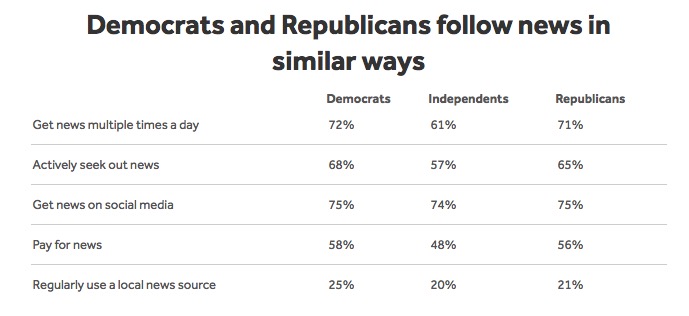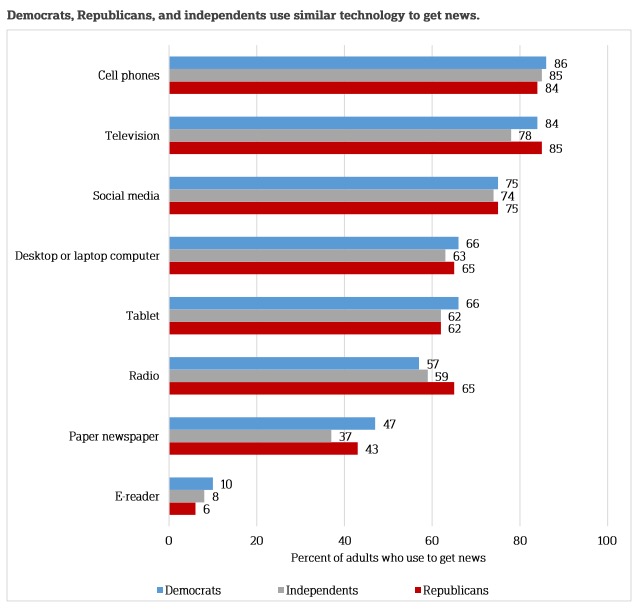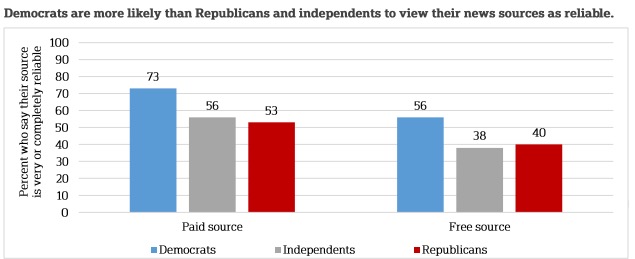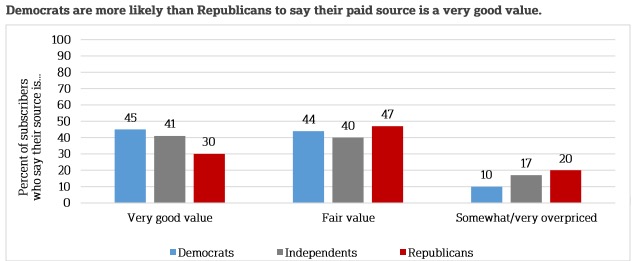Similar percentages of Democrats and Republicans said they get news multiple times a day, actively seek out news, get news on social media, pay for news, and get news from local sources regularly, the study found.
72 percent of Democrats and 71 percent of Republicans said they get news more than one time a day. 75 percent of people in both parties get news on social media. 58 percent of Democrats and 56 percent of Republicans say they pay for news. One-quarter of Democrats and 21 percent of those in the GOP said they routinely access local news sources.

Additionally, members of both parties access news via mobile devices, computers, and TV similarly. 86 percent of Democrats and 84 percent of Republicans said they get news from cell phones. 66 percent of Democrats and 65 percent of Republicans access news on computers. When it comes to getting news from TV, 85 percent of Republicans and 84 percent of Democrats

Democrats and Republicans also follow national politics, local politics, and news from their neighborhoods or towns at similar rates.

Still, the study notes, that “it is independents who stand out from partisans of either stripe, particularly for being less likely to follow news closely or engage in other ways with news.” For instance, 61 percent of independents said they get news multiple times a day, compared to 72 percent for Democrats and 71 percent from Republicans.
Differences between Democrats and Republicans start to emerge, however, when asked about trust and accuracy in news as well as the specific national outlets where they get news. (Spoiler: Many more Republicans watch Fox News.)

31 percent of Democrats said news from the media is very accurate, compared to just 9 percent of independents and 8 percent of Republicans. 30 percent of Democrats said they “trust information a lot” from the news, with only 12 percent of independents and 8 percent of Republicans saying the same.

Among those who pay for news, 73 percent of Democrats said the sources they pay for are “very or extremely” reliable. 53 percent of Republicans who pay for news said the same.

Democrats were also more likely to say that the news sources they pay for are a “very good value” and were also more likely to be willing to pay for news they now get for free.

The full report is available here.